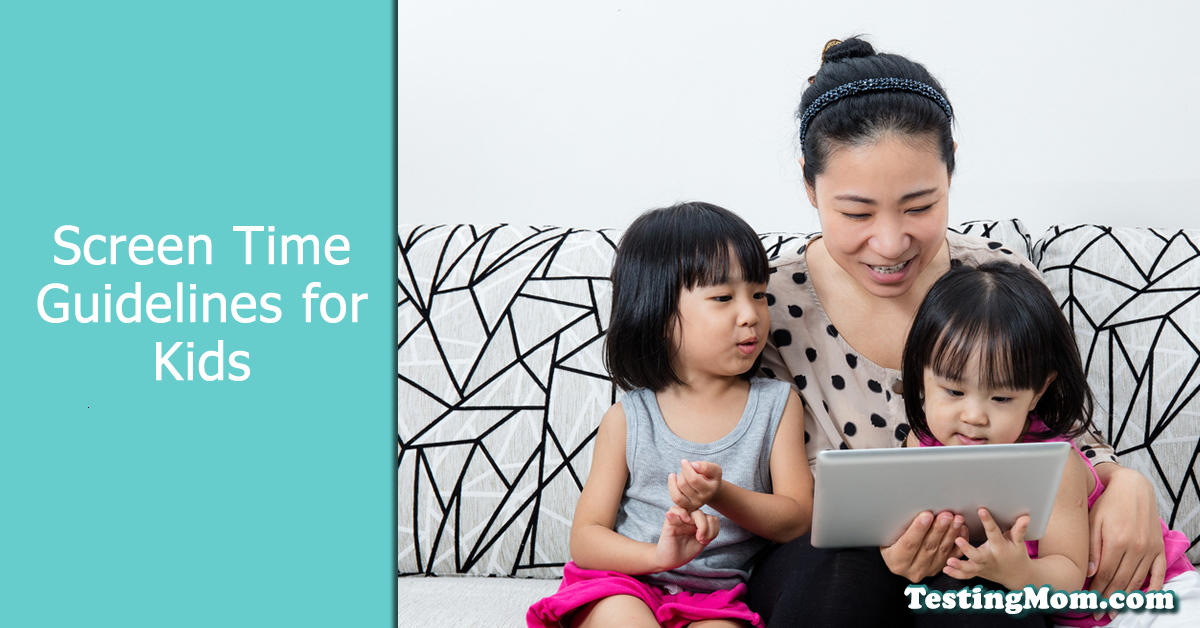› Get Educated: New Screen Time Guidelines for Kids
Get Educated: New Screen Time Guidelines for Kids
posted by Karen Quinn, The Testing Mom - December 5th, 2016
What are the Best Screen Time Guidelines for Kids?

Digital media is everywhere these days from your phone to TV displays at the mall, and most adults have at least one computer, laptop or tablet for personal use at home. Recently, the American Academy of Pediatrics (AAP) released new healthy screen-time guidelines published in the journal Pediatrics for kids starting at 18 months (the only exception for children younger than this cut-off age being video-chatting via Skype, FaceTime or another online program with friends and family members). So here’s what you need to know:
Being a Responsible “Media Mentor” and Parent
- Kids aged 18 months-2 years: Limit screen time, choose high-quality programming and always watch along with your toddler. Educational programs such as those produced by PBS or Sesame Street can include valuable content for kids this age, but it’s important for a parent or trusted adult to help a very young child understand what they’re seeing, answer questions and limit viewing time to an hour or two at most.
- Children 2-5 years old: One hour per day of total screen time, regardless of media type. Whether it’s two episodes of Yo Gabba Gabba! or a favorite educational program (such as com!), the important thing is for you, the parent, to guide children’s media choices and interact while kids are using media to help them understand what they’re seeing, how it applies to them and answer any questions they have while watching, playing or exploring.
- Kids aged 6 and over: Be consistent, but the boundaries you set are entirely up to you. Provided you can manage balancing your child’s screen time with other healthy behaviors, just be sure to enforce the rules you set and keep limitations consistent. “Too much media use can mean that children don’t have enough time during the day to play, study, talk, or sleep,” said Jenny Radesky, MD, FAAP,who co-authored the new AAP guidelines.
- Create designated “media-free” family times and locations in your home. The AAP recommends ensuring that kids get plenty of sleep, physical activity and adequate nutrition to grow, thrive and learn, so mealtimes, your kitchen, in bedrooms and during commutes to and from work, school, places of worship or other extracurricular activities are just a few good options to consider.
- Have regular “safety and privacy” talks with older kids about their time spent online. While most parents are concerned about the media kids consume, older children may ask about setting up a Facebook page or chatting online with friends via instant-messaging programs. Explaining how to treat others online with respect and installing certain child safety programs to limit internet usage and site/software access can go a long way in ensuring your screen time boundaries stay enforced!
What is a Good Screen Time Usage?
Luckily, one of the good “screen time” uses recommended by psychology professor Patrick Markey of Villanova University in Pennsylvania is playing educational games on your smartphone or iPad. So, feel free to let your child spend a few minute each day using our Test Quest app, interactive practice questions available in Digital Tutor and other fun learning games (e.g., Pattern Puzzlers, IQ Fun Tree, Planet Pattern Tile and so on) that come included when you sign up for any TestingMom.com membership. I like that, don’t you?



Tell us about your experiences